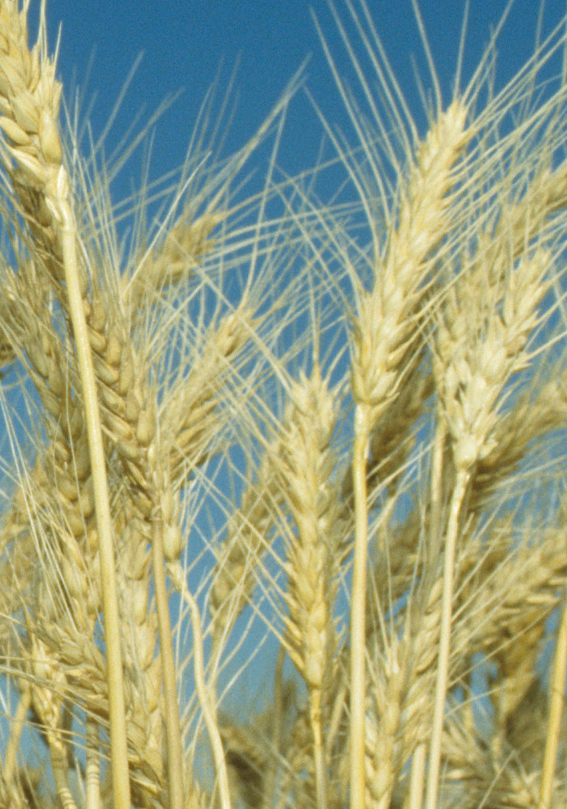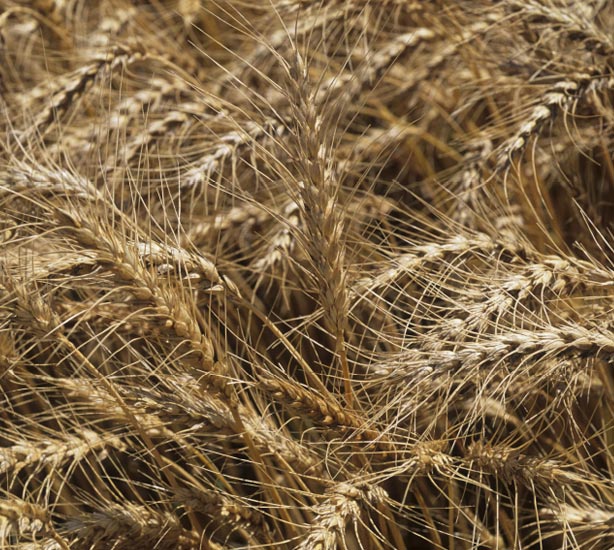
Wheat
cropping
Wheat

-
Output $735m est. Down 46% yoy
-
Production and yields impacted by low rainfall
-
Prices responded as demand for feed grains increased

The 2018–19 season was tough for wheat producers, with patchy planting moisture and little in-crop rainfall leading to limited plantings and low yields. The lack of stock feed on the east coast meant wheat was in high demand, with local prices outstripping gains on the US futures markets. Recent US-China trade tensions have presented some short-term opportunities for NSW wheat producers, but perhaps some long-term challenges.
Protecting wheat from fungus
NSW DPI scientists have identified a new Septoria tritici blotch (STB) resistant wheat gene (Stb19) which could be harnessed in future breeding programs to protect crops from the costly fungal disease. Genetic mapping in varieties ‘Lorikeet’ and ‘Summit’ show strong links with two significant genetic markers which, together with the newly discovered Stb19, delivers a significant increase in genetic resources to breed STB resistant wheat.
Media Release
Production
Seasonal conditions made the year very difficult for growers in 2018–19, with severe rainfall deficiencies across most of the state. Southern areas received some rainfall to begin the season, however follow-up rainfall to finish the crop was mostly elusive. Ultimately, the area planted and yields did not reach potential, resulting in a significantly smaller harvest of an estimated 1.8 million tonnes, down 74% on the 10-year moving average6.
Production and yield
- Production
- Production (drought years)
- Yield
- Average yield
Wheat price spread
- Cash Price
- CME Futures
Contribution to wheat price increase
Download (.XLSX) Source: Quandl (2019); RBA (2019); ABARES (2019e)Price
Global wheat consumption outstripped production in 2018–19, resulting in wheat stocks falling by a modest 2% to 275.5 million tonnes142. The driving factor behind this was a projected decline in global production, with production in the EU, China, Russia and Australia all falling significantly.
Wheat futures rallied in response to the global production issues with prices averaging an estimated USD 194 per tonne, up 6.1% from the previous financial year119. With the east coast drought increasing grain demand for supplementary feeding in an already tight supply situation, prices received domestically were further amplified. Add to this a declining Australian dollar, and farmers who managed to harvest benefited from an increase in the average ASW delivered Sydney price of approximately 30% to $415 per tonne9.
Trade
Low production meant that NSW had a limited exportable surplus and export volumes dropped by 85% to just 225,185 tonnes, most of which was from the 2017–18 season crop87. Further, increased domestic demand from the livestock industry to maintain herds, meant that supplementary imports of as much as three million tonnes of grain from the large WA crop could have been sent to cover the east coast shortfall15.
The markets supplied shrank in 2018–19 with some notable omissions in India, Kuwait, Yemen and very little into the Philippines. The top markets for the year were Japan, Vietnam, New Zealand and Italy which combined made up 69% of the $94 million total wheat export value. Nearly the entire durum crop was exported to Italy with a value of $10 million87. Exports to Indonesia suffered due to supply constraints as well as Indonesia’s ability to access Black Sea region wheat26.
Macroeconomic
Conditions
Global wheat production was expected to decline by 4% year-on-year in 2018–19. However, this should be viewed in the context that production is expected to be higher than the 10-year average and this will be the first season in five years that production will not break new records142.
Drought on the east coast has buffered the impacts on the wheat market of the US-China trade wars that ramped up in July-August 2018. US producers have been shut out of the Chinese market since March 2018, with a 25% tariff on US wheat imports making them uncompetitive125.
Chinese imports of wheat fell to the lowest level in more than five years. Although Canada helped fill some of the shortfall, unfortunately the lack of supply in Australia meant 2018 calendar year exports to China could not fill the void left by the US, and subsequently exports were down approximately 89% in value87.


